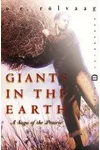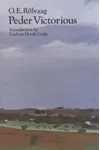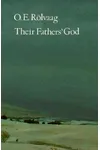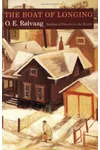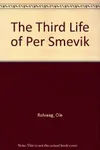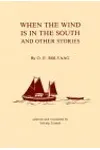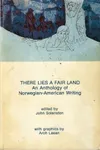Picture a Norwegian storyteller who traded fishing nets for a pen to weave tales of immigrant dreams on the American prairie—meet O.E. Rølvaag! Born in 1876 on Norway’s rugged Dønna island, Rølvaag became a literary bridge between two worlds, crafting stories like Giants in the Earth that capture the heart and hardship of Norwegian settlers in the Midwest. His vivid, soulful narratives still resonate, offering a window into the immigrant experience.
With a fisherman’s grit and a scholar’s heart, Rølvaag didn’t just write stories—he preserved a culture. His work blends raw realism with Norse fatalism, making him a standout in American literature. Ready to dive into his world? Let’s explore the life, works, and lasting legacy of this Norwegian-American gem.
The Making of O.E. Rølvaag
Ole Edvart Rølvaag was born into a fishing family in a tiny village on Dønna, Norway, where the Arctic Circle’s chill shaped his early years. At 20, he sailed to America in 1896, landing in South Dakota to work as a farmhand. The harsh prairie life and cultural dislocation he faced fueled his storytelling. After earning degrees from Augustana Academy and St. Olaf College, plus a stint studying in Oslo, Rølvaag joined St. Olaf’s faculty in 1906, teaching Norwegian language and literature. His dual identity as a Norwegian immigrant and American citizen sparked his mission to chronicle the settler experience.
O.E. Rølvaag’s Unforgettable Stories
Rølvaag’s masterpiece, Giants in the Earth (1927), is the crown jewel of his work. Originally published in Norwegian as two volumes (I de dage, 1924, and Riket grundlægges, 1925), this epic follows Per Hansa and Beret, Norwegian pioneers battling the Dakota Territory’s brutal elements and their own inner struggles. Per’s ambition clashes with Beret’s homesickness, creating a psychological depth rare for its time. Rølvaag’s prose, translated with Lincoln Colcord, paints the prairie as both a character and a foe, blending Norse mythology with raw realism.
His trilogy continued with Peder Victorious (1928), exploring the next generation’s cultural assimilation, and Their Fathers’ God (1931), tackling faith and identity. Earlier works like The Third Life of Per Smevik (1912), a semi-autobiographical tale of immigration, and The Boat of Longing (1921), a poetic urban immigrant story, show his range. Rølvaag’s style—gritty yet lyrical—captures the loneliness, resilience, and cultural tension of leaving one home for another.
Why O.E. Rølvaag Matters
Rølvaag’s work transcends time, offering a raw look at the immigrant experience that still speaks to today’s global migrations. As a founder of the Norwegian-American Historical Association in 1925, he championed cultural preservation, urging immigrants to hold onto their language and traditions. His novels, especially Giants in the Earth, are hailed as American classics, inspiring writers like Willa Cather and earning accolades like the 1951 Pulitzer Prize for its opera adaptation. Rølvaag’s legacy lives in his ability to make readers feel the weight—and hope—of starting anew.
- Born: April 22, 1876, Dønna, Norway
- Died: November 5, 1931, Northfield, Minnesota
- Key Works: Giants in the Earth, Peder Victorious, The Boat of Longing
- Awards: Knighted (Order of St. Olav, 1926) by King Haakon VII
Snag Giants in the Earth and dive into Rølvaag’s soul-stirring saga of grit and grace on the American frontier!
